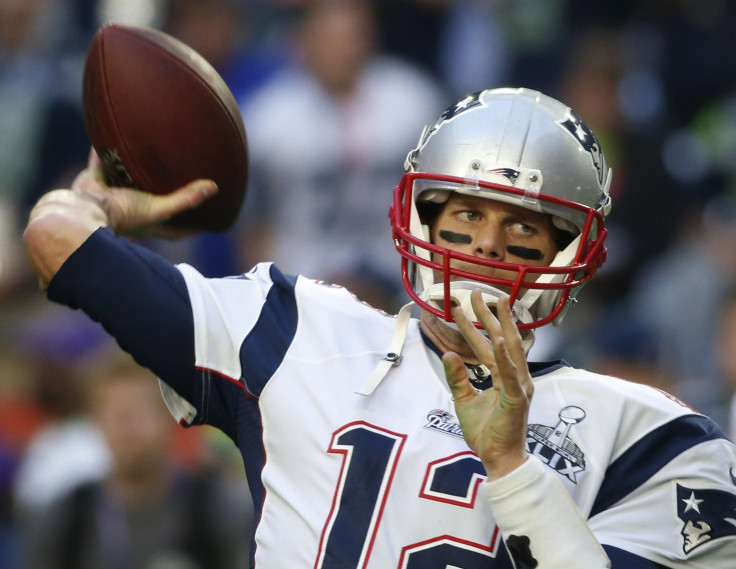Did Tom Brady Cheat? Breaking Down NFL Ball Rules In 'Deflategate'

Following the release of Ted Wells’ report on “Deflategate,” New England Patriots quarterback Tom Brady has come under fire for his possible role in the controversy.
Wells, an attorney appointed by the NFL to investigate whether the Patriots intentionally deflated footballs so as to gain a competitive advantage in last season’s AFC championship game against the Indianapolis Colts, stated in his findings released Wednesday that Brady “probably” knew rules were being broken.
Other than several text message exchanges with Patriots locker room attendant Jim McNally and equipment assistant John Jastremski, Wells didn’t find a direct link or evidence that Brady directed or was behind the deflating of the game balls. Hence the use of the term “probably.”
It’s also unclear if New England gained a significant advantage over the Colts, though a softer game ball is easier to grip, handle, and catch. The Patriots went on to easily defeat Indianapolis, 45-7, and then beat the Seattle Seahawks in the Super Bowl.
However, Brady, along with McNally and Jastremski, are facing discipline from the NFL, ESPN’s Adam Schefter reported.
From a technical standpoint, while no intent by Brady has been proven, it’s clear the Patriots played with game balls that did not follow the league’s clear-cut rules.
The NFL rule book lays out not only the proper inflation weight, but also the color of the ball, the dimensions and shape it must be.
From the rule book: “The Ball must be a “Wilson,” hand selected, bearing the signature of the Commissioner of the League, Roger Goodell. The ball shall be made up of an inflated (12 1/2 to 13 1/2 pounds) urethane bladder enclosed in a pebble grained, leather case (natural tan color) without corrugations of any kind. It shall have the form of a prolate spheroid and the size and weight shall be: long axis, 11 to 11 1/4 inches; long circumference, 28 to 28 1/2 inches; short circumference, 21 to 21 1/4 inches; weight, 14 to 15 ounces. The Referee shall be the sole judge as to whether all balls offered for play comply with these specifications. A pump is to be furnished by the home club, and the balls shall remain under the supervision of the Referee until they are delivered to the ball attendant just prior to the start of the game.”
Furthermore, it appears the Patriots also violated how and when the game balls were inspected by referee Walt Anderson.
“Each team will make 12 primary balls available for testing by the Referee two hours and 15 minutes prior to the starting time of the game to meet League requirements,” the rule book reads. “The home team will also make 12 backup balls available for testing in all stadiums. In addition, the visitors, at their discretion, may bring 12 backup balls to be tested by the Referee for games held in outdoor stadiums. For all games, eight new footballs, sealed in a special box and shipped by the manufacturer to the Referee, will be opened in the officials’ locker room two hours and 15 minutes prior to the starting time of the game. These balls are to be specially marked by the Referee and used exclusively for the kicking game. In the event a home team ball does not conform to specifications, or its supply is exhausted, the Referee shall secure a proper ball from the visitors and, failing that, use the best available ball. Any such circumstances must be reported to the Commissioner.”
What kind of potential penalty awaits the Patriots, Brady, McNally, or Jastremski -- whether it’s monetary, a suspension, or the forfeiture of draft picks -- is unclear. But based off the rule book, the NFL’s strict guidelines weren’t followed and league Commissioner Roger Goodell will have to determine whether or not these infractions merit a punishment.
Though Brady hasn't spoken publicly since the Wells report came out, his agent Don Yee released a statement that called into question the investigation and the veracity of its findings.
"The Wells report, with all due respect, is a significant and terrible disappointment. Its omission of key facts and lines of inquiry suggest the investigators reached a conclusion first, and then determined so-called facts later,” the statement reads.
“This was not an independent investigation and the contents of the report bear that out -- all one has to do is read closely and critically, as opposed to simply reading headlines. The investigators' assumptions and inferences are easily debunked or subject to multiple interpretations.”
© Copyright IBTimes 2024. All rights reserved.











